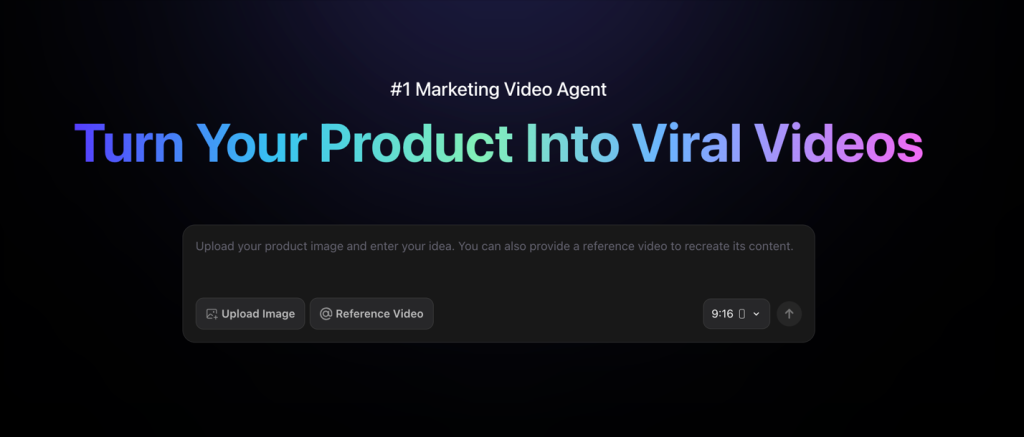Most creators already use AI for writing scripts, cleaning audio, or generating short clips. These tools made production faster, but they still relied on clear commands. You had to tell them exactly what to do.
Now, something new is emerging. The AI Video Agent doesn’t just follow instructions. It understands them. It can interpret goals, anticipate needs, and turn ideas into structured, ready-to-publish videos.
This article explores how this shift is happening, and how AI Video Agents are redefining the creative process with platforms like Topview bringing these ideas to real-world marketing.
The Evolution of AI Video Creation: From Tools to Video Agents
The role of AI in video production has changed dramatically in just a few years. What started as a way to automate simple editing tasks is now evolving into systems that can understand creative goals and make production decisions independently.
Early AI tools were built for efficiency. They focused on eliminating repetitive manual work, offering features such as:
- Auto-editing and trimming clips based on duration or motion
- Pre-built video templates that matched common formats
- Automatic subtitles and basic visual enhancement
These tools saved time but had one clear limitation: they could only follow instructions. Creators still had to plan scenes, choose pacing, and decide how a story should unfold.
The arrival of AI Video Agents marks a turning point. Instead of waiting for commands, these systems can interpret creative intent. They analyze input prompts, learn from reference videos, and generate entire storylines that reflect the desired mood and purpose.
AI is no longer a silent assistant at the edge of the workflow. It is becoming a thinking partner that understands narrative structure, style, and audience engagement – transforming video creation from a manual process into intelligent collaboration.
How AI Video Agents Understand Creativity
Traditional video tools respond to direct commands: cut here, add music there, apply this filter. Agents, however, work with intent. They read between the lines of a prompt to grasp tone, purpose, and emotion.
For example, when you tell a video agent to “create a product teaser that feels cinematic but fun,” it doesn’t just pick random footage. It studies the phrasing — film implies wide shots, gradual pacing, and dramatic lighting, while playful points to brighter colors and upbeat music.
Their intelligence relies on several layers of analysis:
- Semantic understanding: interpreting text or voice inputs for tone, emotion, and purpose.
- Visual reasoning: mapping descriptive cues to imagery, motion, and scene composition.
- Adaptive learning: refining the output based on previous projects or brand style, gradually internalizing the creator’s preferences.
With AI handling technical decisions, creators can focus on ideas. Over time, the agent feels like a teammate who knows your preferences, making video creation faster, smoother, and more intuitive.
AI Video Agents in Real World Creation
While the foundations of each AI Video Agent are similar, their impact varies across creative settings. Each area benefits in its own way.
- Marketing Videos
Campaigns move fast, and keeping content fresh across channels can stretch even large teams. AI Video Agents helps bridge this gap.
A marketer can start with a campaign idea. For example, “a bold, energetic launch video for a new product line,” and the agent automatically handles visual direction, pacing, and editing. What once required multiple production rounds now happens through a few quick feedback loops.
For online sellers, the biggest challenge is scale. Hundreds of products require equally polished videos, but resources are limited. AI Video Agents make it possible to produce them efficiently without compromising quality.
With just a product image, a short description, and a brand reference, the system animates the item, adds captions, and formats it for different ad platforms. It can even highlight key selling points like materials, features, or discounts automatically.
- Social Media Content
Social platforms demand variety and speed. Creators often need multiple versions of a single idea, each tailored to a different audience. AI Video Agents handles this seamlessly.
They analyze each platform’s viewing behavior and stylistic trends, and then adjust tone, pacing, and layout accordingly. A concept can become a playful TikTok, a minimal Instagram Reel, or a storytelling-style YouTube Short.
Topview Brings AI Video Agents to Marketing
Topview captures how AI Video Agents are moving from concept to practice. It’s built for teams that need to produce marketing videos quickly.

At its core, Topview turns minimal input into fully formed videos. A single product photo and a short prompt can become a platform-ready clip. The system reads pacing, visual tone, and rhythm from reference materials, then crafts a result that feels both brand-specific and audience-aware.

- AI-Powered Creation and Storyline Design
Topview’s strength lies in how it builds meaning around minimal data. It doesn’t just animate a product; it constructs a short narrative around it. By learning from high-performing examples, the system mirrors successful storytelling flows, yet adapts them to each product features. The result feels familiar but never repetitive.
- Platform Adaptation with Precision
Each platform favors a different rhythm. TikTok rewards movement; Instagram values composition; Facebook needs clarity. Topview automatically fine-tunes each version’s layout, text balance, and visual pacing, ensuring the same message feels natural in different environments.
- A More Human Workflow
Perhaps the most noticeable change is how users interact with the system. Instead of navigating timelines or editing panels, they describe what they want, and the agent adjusts instantly. The experience feels conversational, like briefing a creative partner who happens to be working at machine speed.
Conclusion
AI Video Agents represent a shift from using tools to collaborating with intelligence. For marketers and content teams, this evolution brings a new rhythm to production: less time spent on execution, more focus on creative thinking.
As platforms like Topview show, intelligent video creation is no longer a future trend but an active force reshaping how ideas reach audiences.

